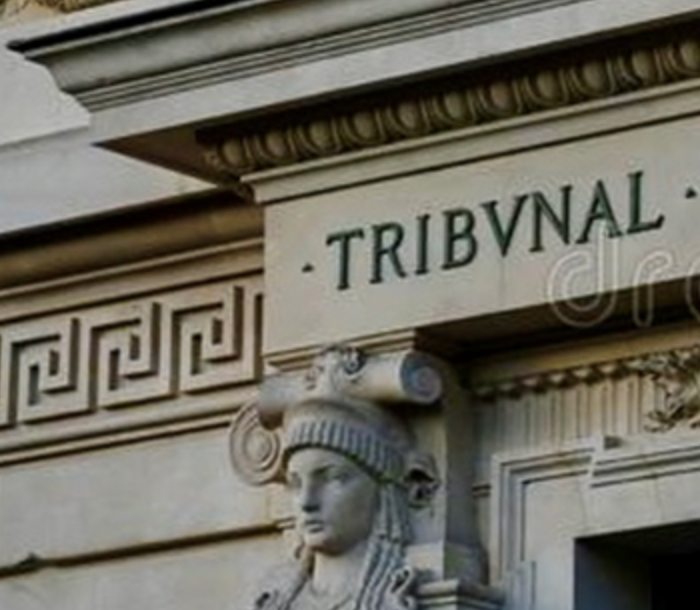
The clock has run down on Ontario’s Conservation Review Board, a fixture for 46 years of our heritage protection regime. Along with the Ontario Heritage Trust, the CRB was one of our two cultural heritage-focused provincial agencies.
We should be sorry to see it go.
The CRB has (almost but not quite) disappeared. It was merged into the Ontario Land Tribunal (OLT), a new mega-tribunal, with the passage of Bill 245, The Accelerating Access to Justice Act, 2021, on April 19 of last year.
And since July 1, 2021, when changes to the Ontario Heritage Act made by Bill 108, the More Homes, More Choices Act, finally came into force, the OLT has assumed all designation-related appeal responsibilities, including the CRB’s old main job of deciding whether a property is worthy of designation.
The provincial government has been consolidating Ontario’s tribunals for a while now. For tribunals dealing with land and environment issues, things started about 16 years ago when the Conservation Review Board was clumped with the Ontario Municipal Board (later the Local Planning Appeal Tribunal), the Environmental Review Tribunal and two others to form something called Environment and Land Tribunals Ontario. This first stage was mainly about reporting and administrative consolidation. Until then the CRB had reported through the culture ministry, which managed its caseload, provided staff support (including legal advice) and resources, and arranged for training.
The “clustering” of the tribunals saw all of them taken over by and reporting through the Ministry of the Attorney General. It also meant the consolidation of their offices in one place, the sharing of staff, consistency in remuneration for members and a single website portal.
With last year’s Bill 245 we’ve now seen a further, formal consolidation — an amalgamation or merger — of the five tribunals into one big entity, with the existing members of the old tribunals rolled into the new OLT.1
What might this mean for heritage in the province?
In practical terms the merger itself is unlikely to change things much. The members will still know what they know about heritage or other matters — and not know what they don’t know — unless of course they get suitable training. One would think that, while one body, the Tribunal will still need to function on some level as several. No member can or will have an interest in or experience with all of the many “land” matters the OLT covers. It would make sense for the Tribunal to have different rosters of members with knowledge/expertise in a particular area; the Tribunal’s chair could draw on these to assign panels to hear the cases that come up.
On the knowledge/expertise question, Bill 245 does not deal with the backgrounds of people appointed to the OLT or what experience or training they should have. Legislation rarely does this — the CRB provisions in the OHA, before they were repealed by the bill, said only that the members were appointed by the Lieutenant Governor in Council (Cabinet) and there had to be five of them.
New appointments to the OLT, as with most provincial agencies, boards and commissions, are at the discretion of the Premier through the Public Appointments Secretariat. (Hint to those of you secretly itching to decide heritage cases: This is where you apply!)

There has long been concern about the knowledge and expertise of the OMB… then the LPAT… now the OLT in dealing with cultural heritage issues — both in property development appeals under the Planning Act and in demolition appeals under the Ontario Heritage Act.2
The Ontario Land Tribunal’s assumption, 11 months ago, of the Conservation Review Board’s former key role of arbiter in designation disputes has only heightened this concern. To be clear: The Tribunal now hears all appeals from municipal decisions to designate individual properties under Part IV of the OHA. And, unlike in the old CRB process, the OLT renders a final, non-appealable decision on whether a property is to be designated or not.3
The Ministry of Heritage, Sport, Tourism and Culture Industries, which, lest we forget, is responsible for the Ontario Heritage Act and its administration, has given assurances that the Tribunal will receive the training it needs to take on this major new function.
Fingers crossed. We may have some sign of the success of this later this year. The Tribunal has received its first designation appeal under the amended OHA.4
Meanwhile, the gentle ghost of the Conservation Review Board still lingers.
Old cases — where objections to designation were referred to the CRB before last July 1, and are handled following the original 1975 process — have gradually worked their way through the system to the decision or settlement stage for some time.5 And there are more to come… more than you might think.
According to the Tribunal there are currently 28 active cases subject to the Ontario Heritage Act as it read on June 30, 2021.6
Asked when it expected the last of these cases to be dealt with, the Tribunal simply responded that it “strives to schedule hearing events as quickly and efficiently as possible” and that “[m]ost reports are issued within 30 days following a hearing for a (former CRB) legacy matter. After the report is issued, it will also be posted to the Tribunal’s website."7
It is interesting that a single OLT member — Daniel Nelson — has been handling so many (most?) of these cases. Mr. Nelson is a previous member of the Conservation Review Board and has many years’ experience with designation cases. As a new appointee he served with former CRB vice-chairs Su Murdoch and Laurie Smith. In response to a question about this, the Tribunal would say only that “[m]ember Daniel Nelson has conducted several (formerly CRB) legacy cases. However, please note that member assignment for all OLT hearing events is subject to the OLT Chair’s discretion and can change at any time.”8
One hopes that Mr. Nelson also finds time to help educate his colleagues on cultural heritage concepts and their application.
In a continuing farewell tribute to the Conservation Review Board, in the coming months we’ll look at some of Mr. Nelson’s recent decisions.
Editor’s note: This article is dedicated to the memory of my friend Michael Vaughan, Q.C., who chaired the Conservation Review Board from 1986 to 1992. Michael died on February 24, 2022 at age 82. In a future post I will share some of Michael’s observations on the contribution of the CRB to Ontario’s heritage protection system.

Michael on his boat on Lake Rosseau, 2019
Notes
Note 1: Ontario Land Tribunal website is here.
Note 2: See the OHA+M article: https://uwaterloo.ca/heritage-resources-centre/blog/post/lpat-job.
Note 3: I am no fan of the switch to a binding appeals process which takes the final decision on designations away from local councils. See the OHA+M article: https://uwaterloo.ca/heritage-resources-centre/blog/post/what-make-bill-108.
Note 4: As of May 13, the OLT has received one appeal of a municipal heritage designation subject to the amended OHA: OLT 21-001952, 2 Valleyanna Drive, City of Toronto.
Note 5: Technically, referrals to the CRB stopped on April 19, 2021, when it was swallowed by the OLT, but referrals between April 19 and July 1, 2021, like older referrals, are subject to the old (CRB) review process rather than the new appeal process.
Note 6: Email of May 13, 2022 from the Ontario Land Tribunal to Dan Schneider.
Note 7: Ibid.
Note 8: Ibid.